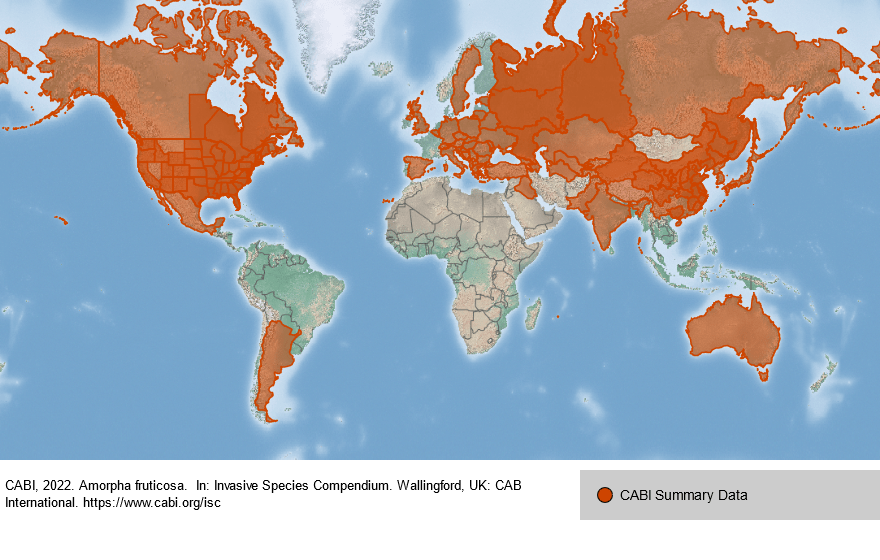 |
False indigo-bush | Status LU: n/a. 1st record: 1934, ITW 1934. |
 |
Buschege Schäininnech | Status Eur.: n/a. 1st record: . |
 |
Amorphe buissonnante | RA: ISEIA: n/a Harmonia+: n/a |
 |
Bastardindigo | Wikipedia: |
 |
Bastaard indigostruik | Back to the list of neophytes |
Contents
Report the species
→ Report Amorpha fruticosa to the National Museum of Natural History.
Brief description
Amorpha fruticosa L. originates from North America and is cultivated as an ornamental. It was introduced in Europe from France to Russia (EPPO 2022). The fast-growing, deciduous shrub grows preferentially in wetlands, like riparian and alluvial habitats, sandy banks of ravines, coastal areas, and dunes. However, it tolerates some disturbed areas, such as plantations, orchards, meadows and urban areas. Due to its high reproductive capacity, A. fruticosa can form dense thickets that outcompete native flora, change successional patterns and reduce biodiversity. It is now generally accepted to be among the most invasive alien species in Europe. Repeated cutting and mowing can help to control populations of this species (CABI 2022).
In 2014, Switzerland added the Fabaceae to its List of Invasive Alien Plants (EPPO 2022).
Status and distribution in Luxembourg
Records of Amorpha fruticosa L. in Luxembourg. Data source: Recorder-Lux, iNaturalist & GBIF, 2024-04-17.
Risk assessment
ISEIA protocol
Not assessed yet.
Harmonia+ protocol
Not assessed yet.
Worldwide distribution

Bibliography
- CABI, 2019. Amorpha fruticosa. In: Invasive Species Compendium. Wallingford, UK: CAB International. URL: www.cabi.org/isc [accessed 2022-08-22]
- Wikipedia contributors, 2022. ‘Amorpha fruticosa‘, Wikipedia, The Free Encyclopedia, 9 August 2022, 01:26 UTC, <https://en.wikipedia.org/wiki/Epilobium_brachycarpum> [accessed 2022-08-22]
Suggested citation of this webpage
Ries, C., M. Pfeiffenschneider & Y. Krippel (Eds.), 2024. Amorpha fruticosa L. In: neobiota.lu - Invasive Alien Species in Luxembourg. National Museum of Natural History, Luxembourg. URL: https://neobiota.lu/amorpha-fruticosa-l/ [Accessed 2024-04-17].
Page content last updated on 2023-09-26. Last proofread by Caroline Grounds on 2022-09-06.

